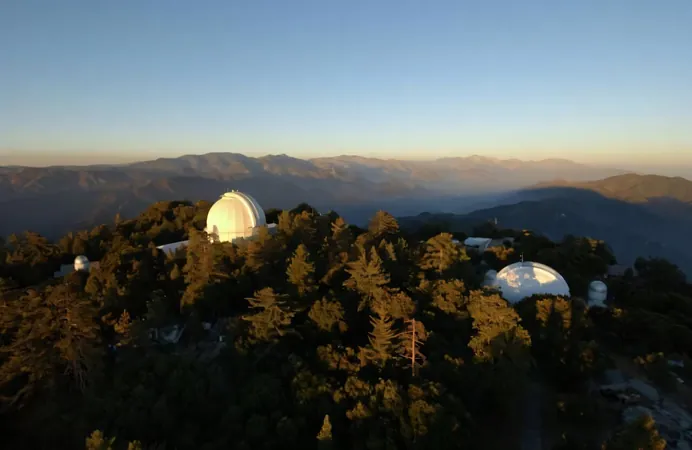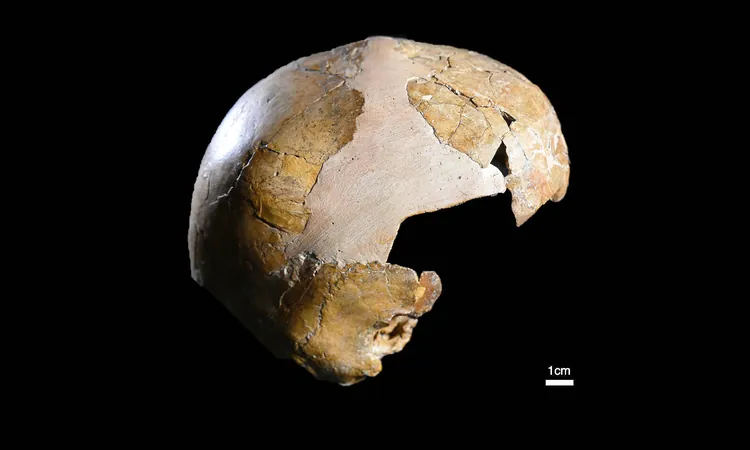
Unveiling Cosmic Secrets: What the Incredible CHARA Array Will Reveal in Its Third Decade!
2025-07-24
Author: Emily
A Stellar Legacy of Discovery
Georgia State University's Center for High Angular Resolution Astronomy, known as the CHARA Array, has been an astronomical powerhouse for two decades. This six-telescope interferometer has transformed our understanding of stars, boasting 276 published papers that reveal the mysteries of the cosmos. As GSU marks this impressive milestone, it's also a testament to its evolution into a significant research university.
From Regulus to Revolutionary Discoveries
Hal McAlister, a pioneering scientist at GSU, led one of the first groundbreaking papers in 2005, which focused on Regulus, a dazzling star in the Leo constellation. This groundbreaking study not only measured gravity darkening in rapidly spinning stars but also marked a significant advancement in stellar astrophysics.
Pioneering Stellar Research
Since then, CHARA has profoundly impacted the field of astrophysics. With data complementing the Gaia and Hipparcos missions, its capabilities have allowed scientists to delve deeper into stellar evolution, identifying the unique shapes of fast-rotating stars and imaging spectacular features on their surfaces. CHARA has even illuminated the circumstellar disks around Be stars, composed of material expelled from these celestial giants.
Transformative Times Ahead
Theo ten Brummelaar, another key figure in CHARA’s history, reflects on the humble beginnings of the project. Despite doubts about funding and success, the team at GSU persevered, transforming the university and establishing CHARA as a cornerstone of ground-based optical interferometry. Today, its insights into the stars are invaluable in the ongoing search for exoplanets.
Unlocking Stellar Mysteries for Planetary Science
Understanding stars is crucial for unraveling the secrets of planets. Ten Brummelaar reminds us, "Without understanding stars, we'll never understand planets.” As the current CHARA Director, Douglas Gies, states, the array has opened up new dimensions in astronomy, enhancing our comprehension of the universe.
Explosions of Light: A Nova's Tale
CHARA’s prowess doesn't stop at stellar imaging; it also plays a vital role in studying nova explosions. By capturing the initial moments of these brilliant events, where white dwarfs siphon hydrogen from their companions, CHARA provides the first images of the expanding fireballs, revealing the evolution of ejected materials.
Preparing for New Frontiers
Anticipation is building as the National Science Foundation has allocated $3.5 million for CHARA in 2024, opening new avenues for groundbreaking research. Gies emphasizes the importance of this support in facilitating innovative studies about stars and distant galaxies.
A New Era with Expanded Capabilities
With recent upgrades, including the addition of a seventh mobile telescope, CHARA is set to reach unprecedented levels of astronomical resolution. This upgrade enhances the array's capabilities, allowing for detailed imaging of even larger stars, and expands its baseline from 330 to 550 meters. It is a leap forward in CHARA's mission to decode the universe’s many wonders.
The Future of Astronomy Is Bright!
Nigel Sharp from the NSF encapsulates the excitement surrounding CHARA's future: "It runs the best optical and infrared interferometer in the world, providing unmatched resolution for non-expert researchers. With routine high-quality observations, this facility is poised to deliver groundbreaking discoveries about our universe, stars, and potentially even life beyond our planet."









 Brasil (PT)
Brasil (PT)
 Canada (EN)
Canada (EN)
 Chile (ES)
Chile (ES)
 Česko (CS)
Česko (CS)
 대한민국 (KO)
대한민국 (KO)
 España (ES)
España (ES)
 France (FR)
France (FR)
 Hong Kong (EN)
Hong Kong (EN)
 Italia (IT)
Italia (IT)
 日本 (JA)
日本 (JA)
 Magyarország (HU)
Magyarország (HU)
 Norge (NO)
Norge (NO)
 Polska (PL)
Polska (PL)
 Schweiz (DE)
Schweiz (DE)
 Singapore (EN)
Singapore (EN)
 Sverige (SV)
Sverige (SV)
 Suomi (FI)
Suomi (FI)
 Türkiye (TR)
Türkiye (TR)
 الإمارات العربية المتحدة (AR)
الإمارات العربية المتحدة (AR)